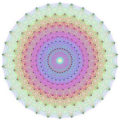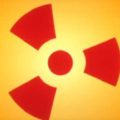
An international team of researchers say they have observed evidence of solitary vibrations (solitons) in a solid. The scientists, from Los Alamos, Oak Ridge and Argonne laboratories, and the Institute for Transuranium Elements in Germany, write about their discovery of random localized vibrations in a three dimensional solid in Physical Review Letters.
The Scottish scientist John Scott Russell first described the soliton in 1834 after observing the phenomenon on the surface of a canal while conducting experiments to determine the most efficient design for canal boats. Twenty years ago, scientists theorized that solitons might exist in solids but physical evidence of their existence was lacking.
Now however, the researchers have used x-ray and neutron scattering experiments to identify random localized vibrations – called lattice solitons – in uranium crystals at high temperatures. They speculate that the vibrations are caused by strong electron-phonon interactions.
The discovery will have immediate implications for uranium science and solid-state physics and other potential applications will likely emerge in the future. Interestingly, the study noted that the localized vibrations may play a role in breaking chemical bonds in biological processes.


















Comments are closed.